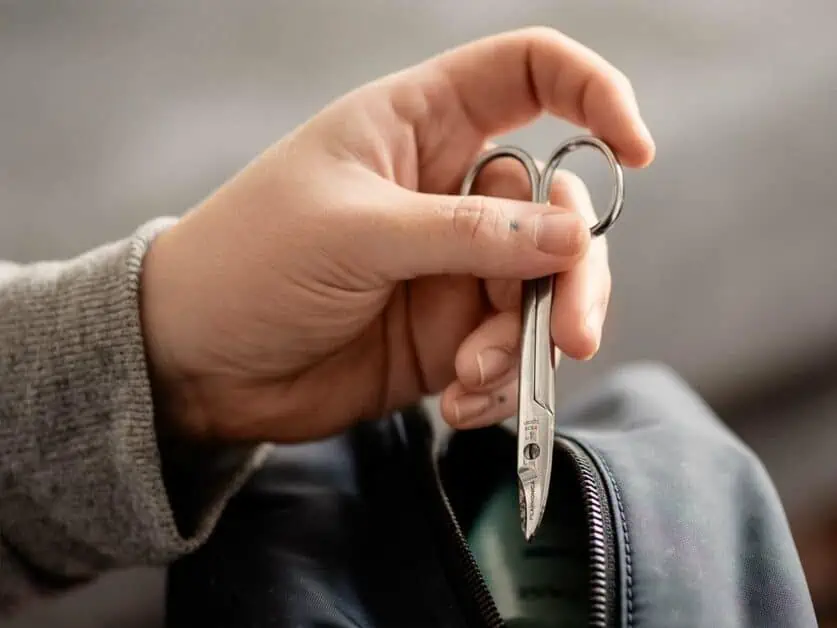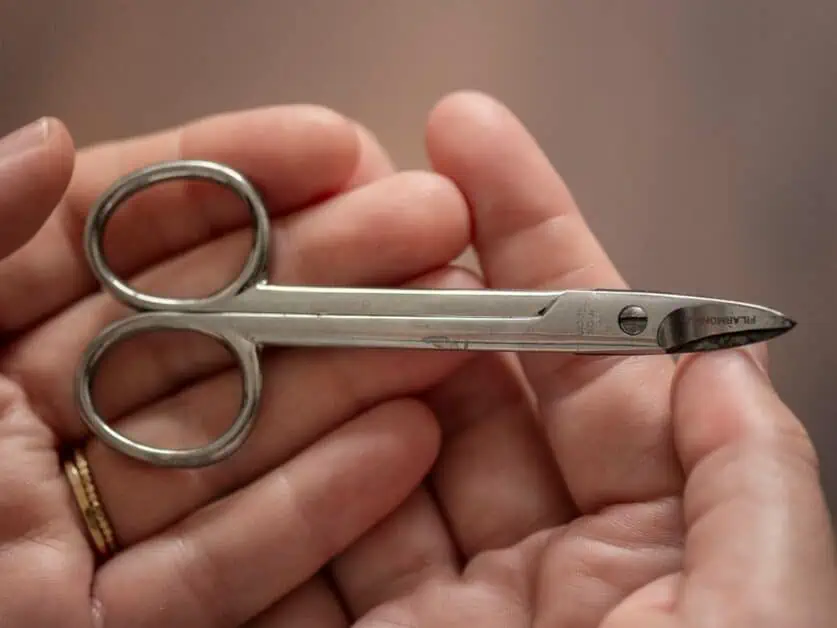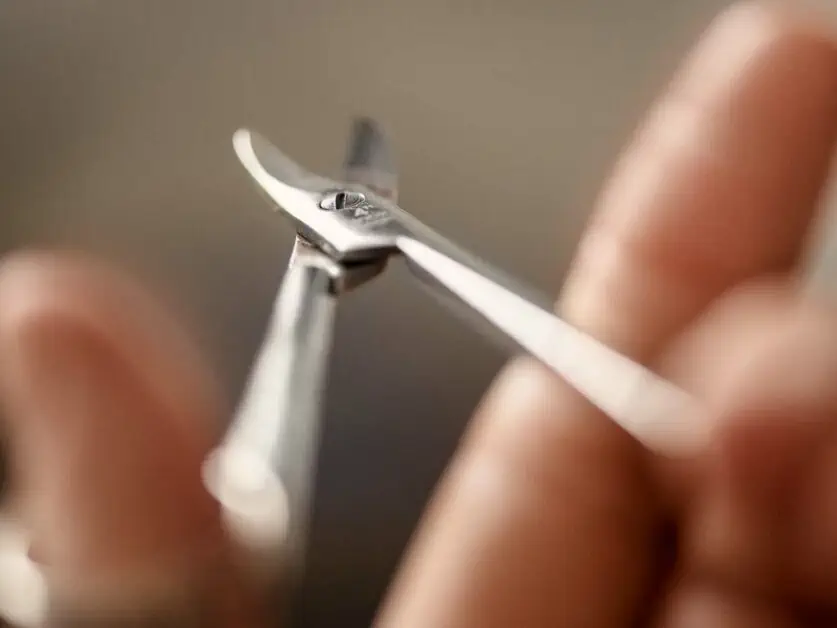When you are getting ready to fly away on a trip, you may find packing stressful. Trying to figure out which items are permitted on a plane can be a minefield. Some everyday things can unexpectedly be banned from either your carry-on bag or your checked luggage. Every country around the world decides on its own rules about what you can take on a plane, which makes it challenging. Scissors are one of the items that can be tricky when deciding where to pack. While it varies, the majority of countries will allow you to have scissors in your suitcase in the hold, but they will have restrictions on bringing them in your hand luggage.

Table of Contents
ToggleWhy Wouldn’t You Be Allowed to Take Your Scissors in Carry-On Luggage?
The problem with scissors is they tend to have pointed ends and sharp edges. This raises a number of issues:
- They can be used as a weapon. Scissors could be used as weapons and could cause harm to passengers and crew.
- They could cause an injury. Scissors could accidentally harm someone. They could fall out of your bag and cause an injury. If your carry-on is soft-sided, the sharp end could pierce the material and hurt someone moving the bag.
- They could damage equipment. Scissors carried loose in a cabin bag could slip out and cause damage to equipment.
So, Can I Bring My Scissors on a Plane as Carry-On Luggage?
It is always sensible to check the rules before deciding where to pack your belongings, especially when it is something with sharp blades like a pair of scissors.
America – What Does the TSA Say About Scissors?
In America, the Transportation Security Administration (TSA) restricts what sharp objects, including scissors, you can put in your carry-on bags. Scissors are only allowed if they are less than four inches from the pivot point. Any scissors with longer blades must be packed in your checked bags. If you do put any scissors in your suitcase, the TSA requests that they are sheathed or securely wrapped to prevent injury to baggage handlers and inspectors.
The UK – What Are the UK Government’s Regulations Concerning Scissors?
The UK will allow you to take small scissors that have blades measuring six centimetres or less from the fulcrum to the end in your hand luggage. Scissors with blades longer than this must go in your suitcase in the hold. The only exception is if you have round-ended blunt scissors; these would be allowed in your cabin bag even if they are longer than six centimetres.
Europe – What Are the EU’s Guidelines Regarding Scissors?
The EU bans any object with a sharp point or sharp edge capable of being used to cause serious injury, including scissors with blades of more than six centimeters as measured from the fulcrum.
- https://transport.ec.europa.eu/transport-modes/air/aviation-security/information-air-travellers_en
- https://transport.ec.europa.eu/system/files/2016-09/info_travellers_hand_luggage.pdf
Australia – Does the ABF Have Laws About Scissors?
The Australian Border Force (ABF) prohibits sharp items that are not weapons but are capable of causing harm by penetration from being packed in your carry-on baggage. They specify that this includes pointed metal scissors, manicure scissors, and scissors with blades over six centimetres long. The ABF does allow blunt-ended or round-ended scissors with blades less than 6cm long. While this would seem to indicate that you are permitted sharp-ended scissors with blades of less than six centimeters, this does not seem to be the case.
- https://www.homeaffairs.gov.au/travelsecure-subsite/Pages/Items-you-cannot-take-on-plane.aspx
- https://dangerousgoodsapp.casa.gov.au/
New Zealand – What Are the CAA of New Zealand’s Rules About Scissors?
The Civil Aviation Authority of New Zealand (CAA) has similar rules to their Australian counterparts. They ask all passengers to make sure no items in their carry-on bag could be used to stab, slice, or hit someone. This restriction would include scissors. However, they allow scissors with blades of less than 6cm in length, measured from the fulcrum, in carry-on luggage. The CAA strongly suggests that if you do not need scissors during the flight, you should pack them in your checked baggage or leave them at home.

Canada – What Does the CBSA Say About Scissors?
Small scissors with blades measuring six cm (2.4 in.) or less, measured from the joint – or fulcrum – to the tip, are permitted in carry-on by the Canada Border Services Agency (CBSA). Scissors with longer blades are allowed in checked baggage.
- https://www.catsa-acsta.gc.ca/en/what-can-bring/item/scissors
- https://www.catsa-acsta.gc.ca/en/what-can-bring/sharp-objects
The Rest of the World
While there is some variance from country to country, generally in regions like Africa, Asia, and South America, scissors and any other sharp, bladed objects have to go in your checked luggage and not in your carry-on bag. If you need further information, it would be advisable to contact the airline you are flying with.
- https://www.singaporeair.com/en_UK/us/travel-info/baggage/baggage-restrictions/
- https://www.ethiopianairlines.com/aa/information/baggage-information/restricted-items
- https://www.latamairlines.com/gb/en/help-center/faq/baggage/restricted-articles/restricted%20items
- https://www.china-airlines.com/tw/en/fly/prepare-for-the-fly/baggage/carry-on-baggage
What’s the Best Advice for Travelling on a Plane with a Pair of Scissors?
As the CAA advises, the best thing to do is leave your scissors at home. If you must travel with scissors on a plane, the best place to pack them is in your bag that is going in the hold.
For the protection of both your belongings and any security officer who may need to search your bags, you should take steps to sheath the pointed ends. If you have kept the original packaging, you could use it to transport your scissors safely. If not, you could create some kind of sheath for your scissors. Or you could simply tape some soft material around the sharp ends of your scissors.
If you have some small scissors that you decide to pack in your carry-on bag, you need to be aware that if a security officer decides they are a hazard despite their size, they will be confiscated. Therefore, it would be unwise to carry any expensive scissors or scissors you have a sentimental attachment to in your hand luggage. Most countries give the precise measurements of scissors that are allowed in your cabin bag, so you should check the size of your scissors with a tape measure and not just guess. They usually measure them from the fulcrum or pivot point. This does not include the handles but starts from where the two pieces of metal comprising the scissors cross over and are attached by a pivot screw. You measure the blades from the pivot screw to the tip, not just the part with sharp edges.
What Happens If Your Scissors Are Flagged by Airport Security?
Although you have followed the guidelines regarding scissors, you may still find that they are flagged at the security checkpoint. There is no need to panic; you just need to cooperate with the process. Your tray will be taken off the conveyor belt and taken to a holding area. You will need to make your way to the holding area and have a conversation with the security officer. They will explain why your belongings have been flagged. They may ask you to wrap your scissors more securely so they are less of a hazard, or they may decide your scissors are too dangerous and confiscate them. While you can politely offer suggestions as to why you might be able to keep your scissors, the security officer is responsible for making the final decision. A security officer’s job is to keep all passengers as safe as possible, and showing appreciation for how seriously they take their duties would be appropriate. Sadly, security officers often suffer verbal abuse from passengers. Being rude will not make the security officer change their mind, but you could be fined.
If your scissors have been removed during the security check at an airport, you usually have the opportunity to recover them. The usual process is for all confiscated items to be handed to your airline. The airline will keep them for a few days before disposing of them. You should, therefore, contact your airline as soon as possible to start the process of reclaiming your scissors.

What Are the Different Types of Scissors?
There are seven main categories of scissors:
Gardening, agriculture and animal husbandry
This type of scissors would include things like hedge trimmers, secateurs, loppers, and pruning shears. If you want to take this type of scissors on an airplane, you should contact the airline you are traveling with, as you may need a permit.
Food and drug
Included in this group are kitchen scissors, poultry shears, and cigar cutters. Most of these scissors are too big to go in hand luggage. While cigar cutters are technically allowed in your cabin bag, it would be best to put them in your suitcase if possible.
Grooming
Under this heading are things like hair-cutting shears, nail scissors, and mustache trimmers. These are usually small enough to put in your carry-on, but the sharp points may cause concern, so the best choice would be to pack them in your suitcase.
Metalwork
Scissors for cutting through metal are usually called snips. They typically have blades small enough to be allowed in your cabin baggage. However, as they are tools, a security officer may not be happy for you to take them onboard in your hand luggage. Unless they are a cheap pair that you don’t mind risking losing, it would be best to pack them in a bag in the hold.
Medical
There are a number of specialized scissors that doctors and nurses use. They would have to comply with the same criteria as any other scissors to be permitted in your cabin bag.
Ceremonial
These are the giant, oversized scissors used to cut ribbons. Obviously, you can’t take these in your cabin bag. If you need to take this type of scissors on a plane, you should contact your airline as you may need a permit.
Sewing and clothes-making
There are lots of types of scissors used in dress-making. They include embroidery scissors, dress-making shears, tailor’s scissors, pinking shears, and button-hole scissors. Many of these are small enough to be allowed in hand luggage. If your scissors have rounded, blunt ends, there is more chance that a security officer will allow you to keep them. If you have a pair of scissors that are expensive or you have a sentimental attachment to, you should not put them in your carry-on. While the guidelines may say that your scissors are allowed in your cabin bag, the final decision belongs to the security officer inspecting your bags.
Conclusion
While scissors are viewed as sharp objects that could cause injuries, most countries will allow you to have a small pair of scissors in your carry-on luggage, especially if they have rounded tips. Larger scissors, much like things like razors should be packed in your suitcase. Wherever you pack your scissors, you should take measures to ensure they cannot cause damage, especially if they have sharp tips. While the guidelines may say scissors are allowed in your hand luggage, a security officer can confiscate your scissors if they choose. Therefore, if the pair of scissors has particular value to you and would be difficult to replace, you should not risk packing them in your cabin bag but instead put them in your checked bags that are going in the hold.
See other articles in this series:
- Can You Bring Nail Clippers on a Plane?
- Can You Bring Tweezers on a Plane?
- Can You Bring Hiking Sticks on a Plane?
- Can Your Bring Shampoo on a Plane?
- Can You Bring a Lighter on a Plane?
- Can You Bring Curling Irons on a Plane?
- Can You Bring Razors on a Plane?
- Can You Bring Deodorants on a Plane?
- Can You Bring Candles on a Plane?
